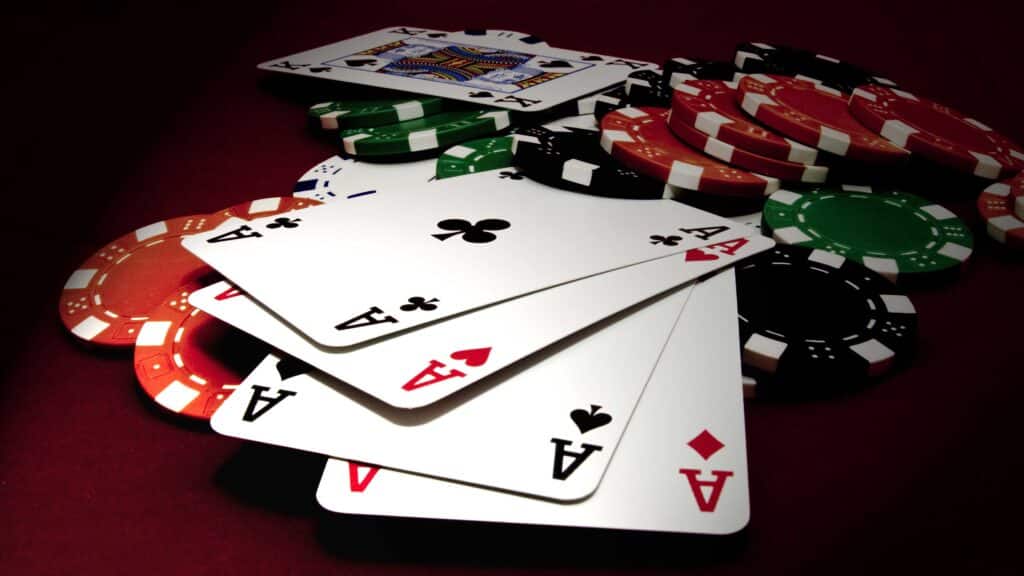Poker is one of the most popular and enduring card games, with millions of players around the world enjoying it both online and in physical casinos. Whether you're a beginner or a seasoned pro, mastering various poker variants is an essential step towards becoming a well-rounded player. With many different types of poker games available, each with its own set of rules, strategies, and nuances, it’s important to understand the unique aspects of each variant in order to excel. In this article, we’ll dive deep into the most popular poker variants, providing insights, tips, and strategies to help you become a poker master.
Understanding the Basics of Poker
Before delving into specific poker variants, it's essential to understand the basic principles of the game. All poker games share certain elements:
- The Deck: Most poker games are played with a standard 52-card deck, consisting of four suits (hearts, diamonds, clubs, and spades) and thirteen ranks (2 through 10, jack, queen, king, ace).
- The Goal: The primary goal of poker is to form the best hand possible using a combination of hole cards (your private cards) and community cards (shared cards available to all players) to win chips or money from other players.
- The Betting Rounds: Poker games typically consist of multiple betting rounds. Players have the option to check, bet, raise, or fold, depending on their hand and strategy. Betting continues until all players have either folded or matched the highest bet.
- Winning Hands: The winning hands in poker range from a high card to a royal flush, with the strength of each hand following this ranking: high card, pair, two pairs, three of a kind, straight, flush, full house, four of a kind, straight flush, and royal flush.
Popular Poker Variants and How to Master Them
Now that we have a basic understanding of poker, let’s explore some of the most popular poker variants. Each variant requires its own approach, skill set, and strategy. Here, we’ll break down the most common types and provide tips on how to master them.
1. Texas Hold'em: The King of Poker
Texas Hold'em is by far the most popular poker variant, widely played in both home games and major tournaments like the World Series of Poker (WSOP). It’s the version you’re most likely to encounter at online poker tables or in live casino rooms. In Texas Hold'em, each player is dealt two hole cards, and five community cards are placed face-up in the center of the table. Players combine their hole cards with the community cards to form the best five-card hand.
How to Play Texas Hold'em
The game consists of four betting rounds:
- Pre-Flop: After receiving their hole cards, players decide whether to call, raise, or fold.
- Flop: Three community cards are dealt face-up, and players bet again.
- Turn: A fourth community card is dealt, followed by another round of betting.
- River: The fifth and final community card is dealt, followed by the final round of betting.
Mastering Texas Hold'em Strategy
To master Texas Hold'em, you need to consider several key elements:
- Position: Your position at the table greatly influences your strategy. Players in early positions should be more conservative, while players in late positions can play more aggressively.
- Starting Hands: Not all starting hands are created equal. A strong starting hand (like pocket aces or kings) will put you in a favorable position, while weaker hands (like 7-2 offsuit) should generally be folded.
- Bluffing: Bluffing is a key element of Texas Hold'em. Knowing when to bluff and when to fold is essential to becoming a successful player.
Advanced Tips for Texas Hold'em
Advanced players should focus on more nuanced strategies, such as:
- Pot Odds: Calculating pot odds helps you determine whether it’s worth calling a bet based on the size of the pot and your odds of improving your hand.
- Implied Odds: This takes into account not just the pot odds but also the future bets you might win if you hit your draw.
2. Omaha Poker: A More Complex Variant
Omaha is a popular variant of poker that’s similar to Texas Hold'em but with a significant twist. In Omaha, each player is dealt four hole cards, and they must use exactly two of these hole cards along with three of the five community cards to make their best hand. This added complexity changes the way players approach the game, requiring more advanced strategies.
How to Play Omaha Poker
Omaha poker follows the same betting structure as Texas Hold'em, with the key difference being that players must use exactly two of their hole cards in combination with three community cards. This gives players more possible combinations for making hands, which can make Omaha poker a much more strategic game.
Mastering Omaha Strategy
To excel in Omaha, players should focus on the following strategies:
- Starting Hand Selection: Strong hands in Omaha typically involve high pairs or suited connectors, as these hands offer the best chances for hitting a strong flop.
- Post-Flop Play: Unlike Texas Hold'em, the strength of your hand in Omaha is much more dependent on the community cards. Focus on evaluating your hand post-flop and consider the potential draws and combinations that can improve your hand.
Advanced Tips for Omaha
Advanced Omaha players should focus on understanding complex draws and the odds of completing them. Properly calculating the odds of hitting a straight or flush on the turn or river is crucial in Omaha.
3. Seven-Card Stud: A Classic with No Community Cards
Seven-Card Stud is a classic poker variant that doesn’t use community cards. Instead, players are dealt seven cards individually, three of which are face-down and four of which are face-up. Players must use the best combination of five cards to form their hand. Seven-Card Stud requires careful observation of other players’ exposed cards and strategic thinking.
How to Play Seven-Card Stud
Seven-Card Stud consists of several rounds of betting and card-dealing:
- Third Street: Each player is dealt two down cards and one up card. The player with the lowest up card must start the betting.
- Fourth Street: Each player is dealt another up card, and betting resumes.
- Fifth Street: Another up card is dealt, and the betting continues.
- Sixth Street: The final up card is dealt, followed by a final round of betting.
- Seventh Street: The last down card is dealt, and the final betting round takes place.
Mastering Seven-Card Stud Strategy
In Seven-Card Stud, success depends heavily on hand reading, as you must track your opponents’ exposed cards and anticipate their potential hands. Here are some essential strategies:
- Pay Attention to Up Cards: Watching the exposed cards of your opponents is critical for understanding the possible hands they could have.
- Know When to Fold: With no community cards to help complete your hand, Seven-Card Stud often rewards patience. Folding a weak hand early can save you money in the long run.
4. Razz Poker: A Lowball Variant
Razz is a variant of Seven-Card Stud, but instead of aiming for the best hand, players strive for the lowest possible hand. Straights and flushes don’t count against you, and aces are always low. Razz is a more strategic game due to the need to think about which cards will complete your low hand and which ones to discard.
How to Play Razz Poker
Razz follows the same structure as Seven-Card Stud, with players being dealt seven cards (three face-down and four face-up). The player with the highest face-up card starts the betting round. The goal is to form the lowest possible hand, with the best possible hand being A-2-3-4-5 (known as the "wheel").
Mastering Razz Strategy
To succeed in Razz, players need to focus on hand selection and opponent tendencies:
- Starting Hand Selection: The best starting hands in Razz include low cards (preferably unpaired). Hands like A-2-3 or 2-3-4 are solid starting hands.
- Paying Attention to Up Cards: Keep a close eye on the exposed cards of your opponents. This gives you valuable insight into their potential hands and allows you to make more informed decisions.
Conclusion: Mastering Poker Variants
Mastering the various poker variants requires understanding their unique rules, strategies, and nuances. While the core principles of poker remain the same across all variants, each one offers a distinct challenge and demands its own approach. Whether you're a beginner or an advanced player, mastering poker involves studying the game, practicing your skills, and continuously refining your strategy. By focusing on hand selection, betting strategies, and reading your opponents, you’ll increase your chances of success in any poker variant you play.



